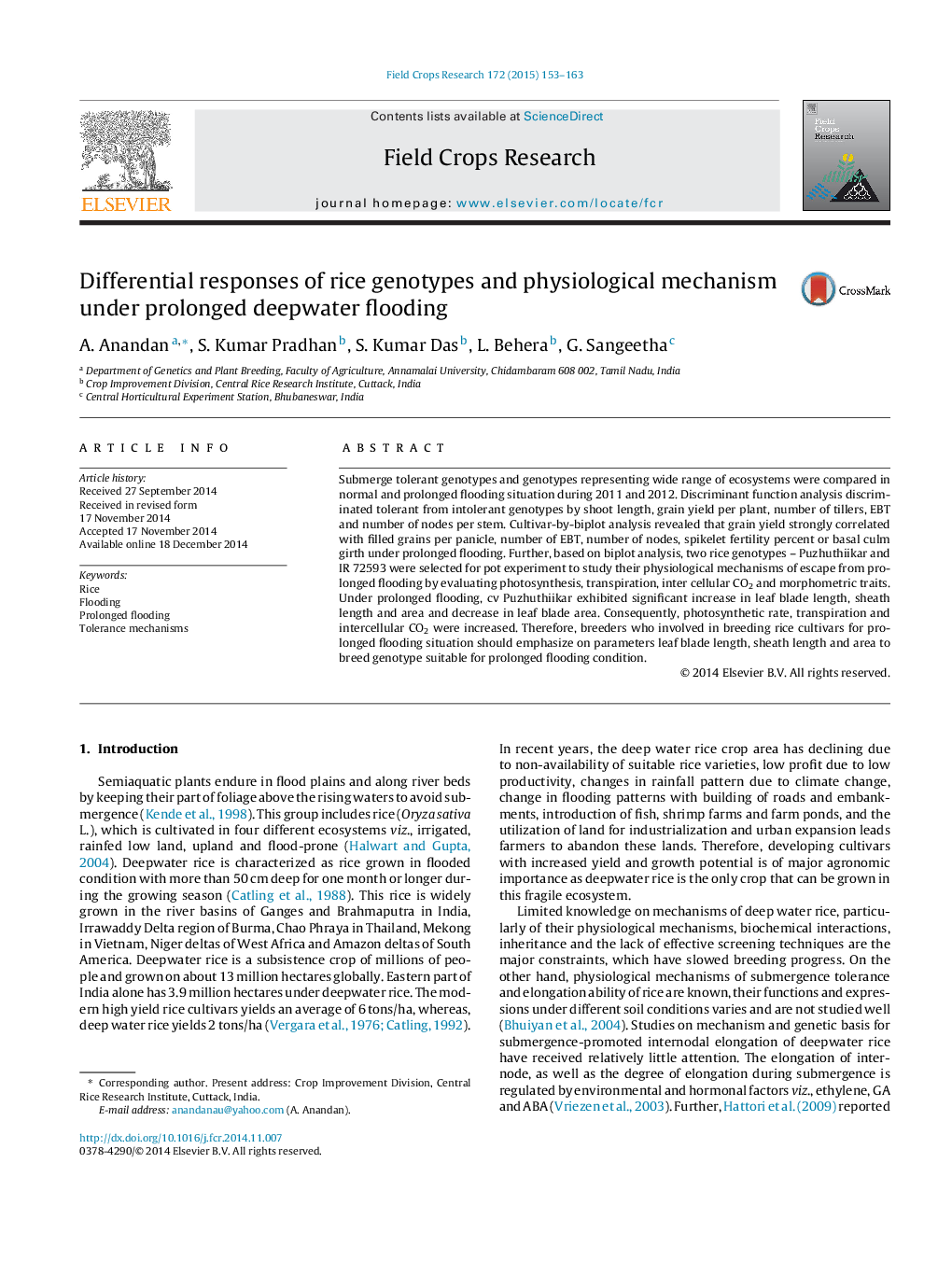| Article ID | Journal | Published Year | Pages | File Type |
|---|---|---|---|---|
| 6375000 | Field Crops Research | 2015 | 11 Pages |
Abstract
Submerge tolerant genotypes and genotypes representing wide range of ecosystems were compared in normal and prolonged flooding situation during 2011 and 2012. Discriminant function analysis discriminated tolerant from intolerant genotypes by shoot length, grain yield per plant, number of tillers, EBT and number of nodes per stem. Cultivar-by-biplot analysis revealed that grain yield strongly correlated with filled grains per panicle, number of EBT, number of nodes, spikelet fertility percent or basal culm girth under prolonged flooding. Further, based on biplot analysis, two rice genotypes - Puzhuthiikar and IR 72593 were selected for pot experiment to study their physiological mechanisms of escape from prolonged flooding by evaluating photosynthesis, transpiration, inter cellular CO2 and morphometric traits. Under prolonged flooding, cv Puzhuthiikar exhibited significant increase in leaf blade length, sheath length and area and decrease in leaf blade area. Consequently, photosynthetic rate, transpiration and intercellular CO2 were increased. Therefore, breeders who involved in breeding rice cultivars for prolonged flooding situation should emphasize on parameters leaf blade length, sheath length and area to breed genotype suitable for prolonged flooding condition.
Keywords
Related Topics
Life Sciences
Agricultural and Biological Sciences
Agronomy and Crop Science
Authors
A. Anandan, S. Kumar Pradhan, S. Kumar Das, L. Behera, G. Sangeetha,
